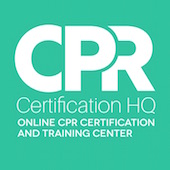Updated Jan 2024 CPR facts and stats published and released annually by various organizations and publications in the health and safety space.
According to recent stats, more than 70% SCA or Sudden Cardiac Arrests occur at home or similar private settings.95% of Sudden Cardiac Arrest victims die prior to even reaching the hospital. Out of all these numbers, only 6% survive cardiac arrest. Therefore, getting trained and acquainted with the basics of CPR and learning how to perform CPR will help you save life of a loved one. An unresponsive victim with no signs of breathing and pulse is considered to be in a cardiac arrest. Providing CPR in the initial minutes can help circulate blood that contains oxygen to the victim's brain and other vital organs.
AHA or American Heart Association has been involved in providing education related to CPR only within the contours of public chest compression, in order to encourage more and more people to combat and respond to medical emergencies that require CPR and first aid performance. Most individuals or bystanders get apprehensive about medical emergencies and similar situations. They either fear handling a victim or lack the knowledge of giving CPR and responding effectively in such situations. For the first few minutes, a bystander can relax and gear up before responding to the victim because the victim has sustainable amount of oxygen in his/her blood within those few minutes. The most important thing to do is get the oxygenated blood circulated via the heart, brain and lungs of the victim, which is ensured when the bystander or rescuer starts giving chest compressions.
Cardiac arrests are not uncommon medical emergencies. They can occur at any time and any place. Even an individual who might appear to be healthy can suffer from a cardiac arrest or similar condition. Furthermore, cardiac arrest and heart attack are not same conditions. Sudden cardiac arrest does not occur out of any severe heart condition. It can occur out of electrical impulses, severe injuries etc. Therefore, it will be helpful for not only you but others around you, to learn at least the basics of CPR and techniques of performing the same on victims, irrespective of gender or age.
Further Reading

More articles by the writer
Updated Jan 2024 CPR facts and stats published and released annually by various organizations and publications in the health and safety space.
According to recent stats, more than 70% SCA or Sudden Cardiac Arrests occur at home or similar private settings.95% of Sudden Cardiac Arrest victims die prior to even reaching the hospital. Out of all these numbers, only 6% survive cardiac arrest. Therefore, getting trained and acquainted with the basics of CPR and learning how to perform CPR will help you save life of a loved one. An unresponsive victim with no signs of breathing and pulse is considered to be in a cardiac arrest. Providing CPR in the initial minutes can help circulate blood that contains oxygen to the victim's brain and other vital organs.
AHA or American Heart Association has been involved in providing education related to CPR only within the contours of public chest compression, in order to encourage more and more people to combat and respond to medical emergencies that require CPR and first aid performance. Most individuals or bystanders get apprehensive about medical emergencies and similar situations. They either fear handling a victim or lack the knowledge of giving CPR and responding effectively in such situations. For the first few minutes, a bystander can relax and gear up before responding to the victim because the victim has sustainable amount of oxygen in his/her blood within those few minutes. The most important thing to do is get the oxygenated blood circulated via the heart, brain and lungs of the victim, which is ensured when the bystander or rescuer starts giving chest compressions.
Cardiac arrests are not uncommon medical emergencies. They can occur at any time and any place. Even an individual who might appear to be healthy can suffer from a cardiac arrest or similar condition. Furthermore, cardiac arrest and heart attack are not same conditions. Sudden cardiac arrest does not occur out of any severe heart condition. It can occur out of electrical impulses, severe injuries etc. Therefore, it will be helpful for not only you but others around you, to learn at least the basics of CPR and techniques of performing the same on victims, irrespective of gender or age.
Further Reading
Vlad Magdalin